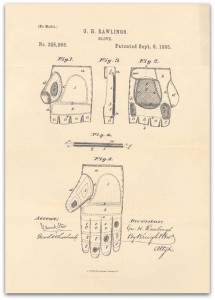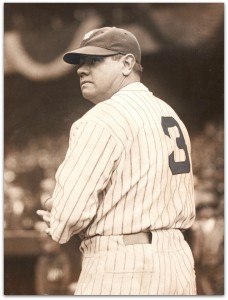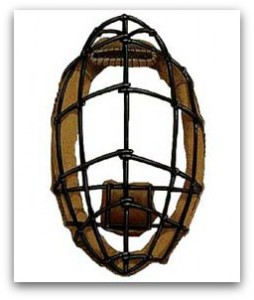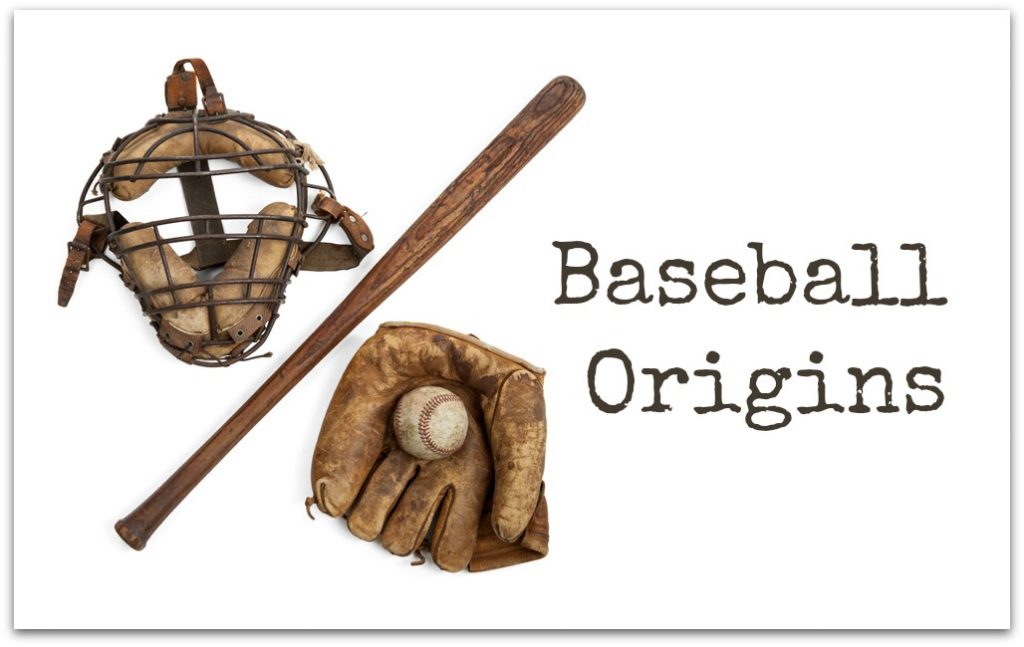America’s national pastime is more than just a game—it’s a tradition. The component parts are traditions, too. We got curious about where they come from and pulled together some great baseball trivia for you.
BASEBALL GLOVES
 Introduced by: Charles Waite, first baseman for the Boston team of the National Association (forerunner of the National League), in 1875
Introduced by: Charles Waite, first baseman for the Boston team of the National Association (forerunner of the National League), in 1875
History: Until Waite started wearing a thin, unpadded, fleshcolor glove, everyone played barehanded. In fact, when he showed up on the field with it, rivals jeered that he was a softy. One contemporary wrote: “Waite confessed that he was a bit ashamed to wear it, but had to save his hand. He also admitted he’d chosen a color as inconspicuous as possible, because he didn’t want to attract attention.”
Note: Though a few players copied Waite, it took a superstar to popularize the use of gloves. In 1883 the shortstop for the Providence, Rhode Island, team broke a finger on his left hand. To protect it, he wore an oversized, padded buckskin glove. One of baseball’s biggest heroes, John Montgomery Ward, decided to wear one too…which inspired manufacturers to begin mass-producing them.
SHIN GUARDS
Introduced by: “One of two black second basemen, Binghamton [New York]’s Bud Fowler or Buffalo’s Frank Grant, who played minor league ball in the 1880s in the International League.” (From Only the Ball Was White, by Robert Peterson)
History: In the 1880s, white ballplayers openly tried to injure black players. Grant and Fowler “knew that about every player that came down to second base on a steal…would, if possible, throw their spikes into them.” So one of them came up with the idea of wrapping wooden slats around their shins.
Note: It only worked for a while…and then the bigots got more vicious. As one player recalled in 1891: “[When] Grant put wooden armor on his legs for protection, the opposition just proceeded to file their spikes to a sharp point and split the shin guards.”
Gruesome trivia: According to Only the Ball Was White, that’s what first made the feet-first slide popular among white players. Grant ultimately moved to the outfield. The first catcher to wear shin guards was Roger Bresnahan in 1907. He fashioned them after the leg guards used in the English game of cricket.
SEVENTH-INNING STRETCH
Introduced by: No one’s sure
History: According to legend, the stretch began in 1910 when President William Howard Taft got up to leave during the seventh inning of a game between Washington and Philadelphia. “His entourage followed,” the story goes, “and fans, seeing a crowd of people standing, stood up also.”
That may have happened, but according to Baseball’s Book of Firsts, the seventh-inning stretch was already part of baseball tradition: “In reality, fans had been standing and stretching at about the seventh inning since the early 1870s.” The book says it started in Boston, where the local team tended to score most of its runs near the end of the game. Around the seventh inning, fans would stand and “cheer on the hometown boys.”
Note: There’s one other claimant—Manhattan College. According to one sports historian: “In 1882 during a baseball game at New York’s Manhattan College, the athletic director, a man named Brother Jasper, called a time out during the seventh inning so that the fidgeting students in the stands would have a moment to stretch.” True? Who knows?
UNIFORM NUMBERS
 Introduced by: The New York Yankees
Introduced by: The New York Yankees
History: Around 1915, teams experimented with small numbers on uniform sleeves, but they made no difference to fans. In 1929, however, the Yankees—realizing they were attracting lots of new fans who didn’t know the players by sight—put big numbers on the backs of uniforms. The original numbers followed the batting order. For example: Babe Ruth, who batted third, got number 3; Lou Gehrig, who batted fourth, was number 4. Later, numbers were assigned at random. It took another 31 years before teams started putting names on the uniforms. Why so long? Apparently, clubs were afraid they’d lose the profits they made from selling scorecards.
CATCHER’S MASKS
 Introduced by: Fred Thayer, coach of Harvard University, in 1875 or 1877, depending on the source
Introduced by: Fred Thayer, coach of Harvard University, in 1875 or 1877, depending on the source
History: Catchers originally wore no protection—they stood off to one side of the plate so they wouldn’t get hit. In 1877, Thayer decided his catcher would have an advantage if he stood right behind the plate. But the student, James Tyng, refused. Thayer explained: “He had been hit by foul tips and had become timid.…I [had] to find a way to bring back his confidence.”
Thayer’s solution: armor. He took a fencer’s mask to a tinsmith, who cut eyeholes in the wire mesh. “Tyng placed the contraption over his head for a game against the Lynn Live Oaks Baseball Club,” writes Lloyd Johnson in Baseball’s Book of Firsts.
Note: Thayer later changed the mesh to wide-spaced iron bars, and added forehead and chin rests. He patented the mask in 1878, and it immediately became popular. Chest protectors were added in 1885.
BATTING HELMETS
Introduced by: Willie Wells, in 1939
History: In 1905 a “pneumatic batting helmet” that looked like a leather football helmet was introduced, but it was too cumbersome and no one used it. Even after Ray Chapman died when he was hit in the head by a pitch in 1920, there was no interest in helmets. Once again, one player trying to protect himself changed baseball.
Wells, a good-hitting shortstop in the Negro Leagues, hung his head over the plate when he batted—which made him especially vulnerable. He finally got sick of being hit in the head, and showed up at a game wearing a miner’s helmet. (No word on whether it had the light in front.) In 1942 he switched to a construction hardhat…which eventually led to helmets made especially for the Major Leagues in 1952.
For more baseball trivia, check out Uncle John’s Bathroom Reader Sports Spectacular.








